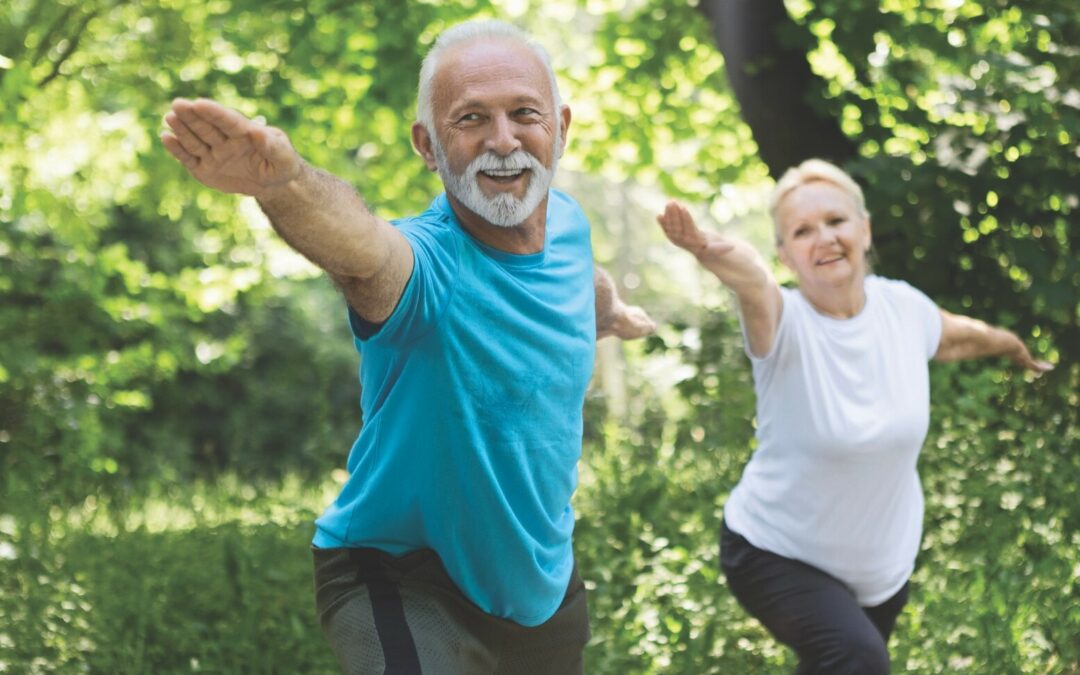Much of life is a balancing act… from learning to sit up as an infant through avoiding falls in the later years. Balance is the ability to distribute your weight in a way that enables you to remain upright and steady. This requires multiple systems in your body to be working in sync with your brain, including: the central nervous system (spinal cord), the vestibular system (inner ear), the visual system (eyes), as well as position-sensing nerves, muscles and bones.
While balance is important at every stage of life, changes associated with aging such as weaker, more inflexible muscles, slower reflexes, worsening eyesight and fewer cells in the vestibular system can affect your balance. Health problems can also affect one’s balance, including inner ear disorders, Parkinson’s disease, stroke, neuropathy and dips in blood pressure. According to the Centers for Disease Control and Prevention, at least one out of every three people over 65 experiences a fall each year.
The good news is that a wide variety of exercises, from weight training and aerobics to simple daily walks, can significantly improve balance. A consistent regimen of training can help you maintain and even improve your balance as you age, by rehabilitating and strengthening muscles as well as improving stability and postural alignment. The benefits of improving balance through exercise also extend to a person’s emotional and psychological well-being.
According to experts, “fear of falling” is ironically one of the biggest predictors of a fall, and faithful adherence to an exercise routine that includes balance-specific training replaces the fear with confidence.
A program to improve balance does not need to be complicated. Begin slowly with regular walks to increase strength and coordination, and try simple exercises such as balancing on one foot or following along with a guided routine on a DVD. More targeted balance training may be done at a fitness center or through the use of a personal trainer or physical therapist.
Professionals can assist you in conditioning the core—the set of muscles, bones and joints that link the upper and lower body. Core conditioning is essential for creating a solid base of support for any type of movement. Working the entire core is necessary for functional fitness, enabling you to bend, twist, rotate or stand in one spot without losing your balance. An effective core workout targets the appropriate muscles with exercises such as squats, lunges, twists and ab crunches.
Exercise professionals also can introduce you to the use of specific equipment to challenge you while improving your balance, such as a BOSU balance trainer, a stability ball, or standing on a spongy, unstable surface, which targets improvement of balance, coordination, core strength and stability.
Pilates, yoga, and the ancient Chinese art of tai chi, are also excellent for improving balance and core strength. Tai chi combines meditation with slow, graceful movements and deep breathing and relaxation, helping people achieve an inner serenity. This approach benefits both mind and body, shown in multiple studies to: build up bones, stabilize joints, lower blood pressure and heart rate, bolster cardiovascular health and immunity, enhance quality of sleep, reduce stress and enhance mood. In addition, studies have shown practicing tai chi reduces falls in seniors by up to 45 percent, and has proven effective in helping people with Parkinson’s disease achieve better balance.
A fall can occur anywhere at any time at any age, underscoring the importance of body balance in daily life. The American College of Sports Medicine recommends a program that combines strength, balance, flexibility and endurance. Explore options you believe may work for you…and please call my office with any questions before starting a new exercise program.

